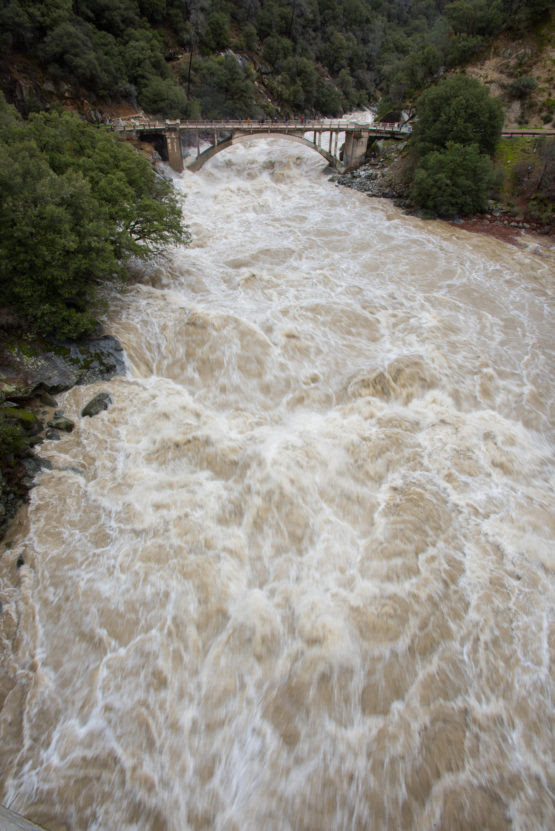When Bridges Collapse; the Value of New Perspectives on Climate Change Impact
Studying how and why bridges have collapsed in the past identifies the limitation of current risk assessment approach and demonstrates the value of new perspectives on climate change impact.
By Rob Jordan
Old Route 49 bridge crossing over the South Yuba River in Nevada City, Calif. saw local and regional visitors during the atmospheric river event across Northern California on January 9, 2017. (Image credit: Kelly M. Grow/ California Department of Water Resources)
The United States is considering a $1 trillion budget proposal to update infrastructure, including its crumbling bridges. An obstacle to spending the money wisely is that the current means of assessing bridges may underestimate their vulnerability, according to a new study published in the Journal of Infrastructure Systems.
Case in point is a bridge along California's iconic Big Sur coast, which collapsed in March, isolating communities and costing local businesses millions of dollars. Although California's recent unprecedented rains were likely to damage infrastructure, standard risk assessments made it hard to identify which bridges were most vulnerable.
"This winter in California has highlighted the vulnerabilities of our nation’s infrastructure," said Noah Diffenbaugh, a professor of Earth system science at Stanford and the Kimmelman Family Senior Fellow at the Stanford Woods Institute for the Environment. "Updating our infrastructure will require both making up for deferred maintenance, and preparing for the increasing risk of extreme events that comes along with global warming."
Big Sur's damaged Pfeiffer Canyon Bridge – out until at least September – is a harbinger of things to come. As climate and land-use change drive more frequent and intense flooding, collapses among the nation’s more than 500,000 water-spanning bridges will likely increase, the authors state.
Complicated natural factors make accurate damage estimates hard to come by, but regional and national bridge studies have predicted up to $250 billion in direct climate impacts costs – numbers that serve only as indicators of the true magnitude of costs related to climate change impacts on bridges, including lost business and ability to commute to work.
Pages: 1 · 2
More Articles
- Jo Freeman Writes: END FOSSIL FUELS NOW Marchers Tell Biden
- The Beige Book Summary of Commentary on Current Economic Conditions By Federal Reserve District Wednesday November 30, 2022
- A la Frank Sinatra: "Come Fly With Me", U.S. Department of Transportation Airline Customer Service Dashboard
- Adrienne G. Cannon Writes: Those Lonely Days
- What Do You Know About the Problem Solvers Caucus in the House of Representatives? They Unveiled New Bipartisan Solutions to Rebuild America’s Infrastructure, Among Other Concerns
- From the CDC: When You've Been Fully Vaccinated You Can ........For the 30,000,000 Who Have Been Vaccinated
- Fed Reserve Gov Brainard: Strengthening the Financial System to Meet the Challenge of Climate Change; opportunities for private-sector investments in low-carbon innovation, infrastructure, energy, and transportation
- Jill Norgren Reviews a New Inspector Gamache Mystery: All the Devils Are Here
- FactCheck Post: The Facts on Trump’s Travel Restrictions: "We Don't Have a Travel Ban; We Have a Travel Band-Aid Right Now"
- Pressing Issues State Lawmakers Are Facing as They Begin Their Work: Voting Access, Vaping, Natural Disaster Prep, Affordable Housing and Health Care






